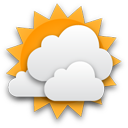The Supersonic “Bow Wave” in the Sonic Boom Caused by a Solar Eclipse: The First-time Discovery Made by Dr. Liu Jann-Yenq and His Research Team
Posted on: 2018-01-11
Last updated: 2024-07-10
Posted by: Academic News
Visit counts: 2389



